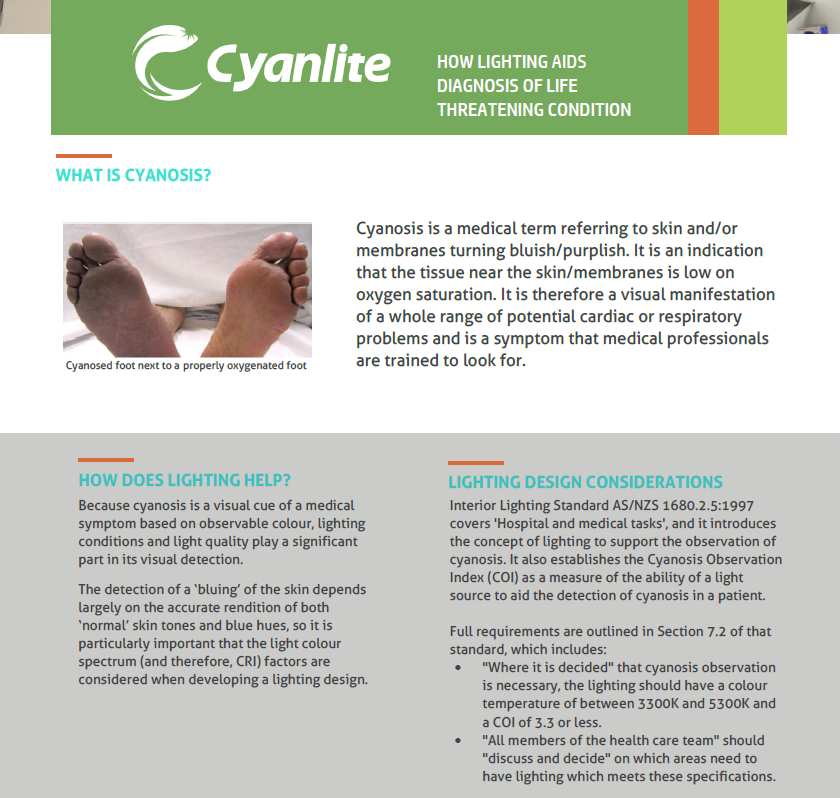
Cyanosis is the medical term for a bluish color of the skin and the mucous membranes due to an insufficient oxygen level in the blood. It is often observed on the fingertips, fingernails or feet in case of peripheral cyanosis; and on the lips and tongue in case of central cyanosis. It is an indicator of serious conditions such as compromised lung or heart function, resulting in lower oxygen levels in the blood. Medical persons are trained to look for cyanosis. Their ability to detect it can be critical for the well-being of patients.

Cyanosis is a visual cue of an underlying medical condition, a light quality that permits accurate observation of “normal” and “blueish” skin tones is essential to the medical staff. The Cyanosis Observation Index (COI) of a light source - has been established as the parameter that determines its suitability for visual detection of cyanosis according to the AS/NZS 1680.2.5:2018 standard.
The COI of a luminaire can be calculated by using its Spectral Power Distribution (SPD) data and an excel calculator. After inputting SPD data for 380nm to 760nm in 5nm increments will return the Cyanosis Observation Index for the light source. Light sources with a COI of 3.3 or less, the lower the better, are deemed to provide the light quality that procures visual conditions appropriate to the detection of cyanosis.
Cyanlite has a range of COI<3.3 compliant lighting products with high lighting efficiency, competitive cost and long life to meet the requirements of visual cyanosis detection. This provides hospitals and medical centers with a better alternative to traditionally expensive COI light sources. Click here to know more about COI<3.3 LED lighting products.
%20Test%20report%20of%20LED%20Panel.png)
%20Test%20report%20of%20Cyanlite%20LED%20Panel.png)
Name: Jim Wang
Mobile:+86-131 6619 3993
Tel:+86-21-3157 9655
Email:sales@cyanlite.com
Add:No.93 Jianhao Road, Pudong District, Shanghai 201318, China